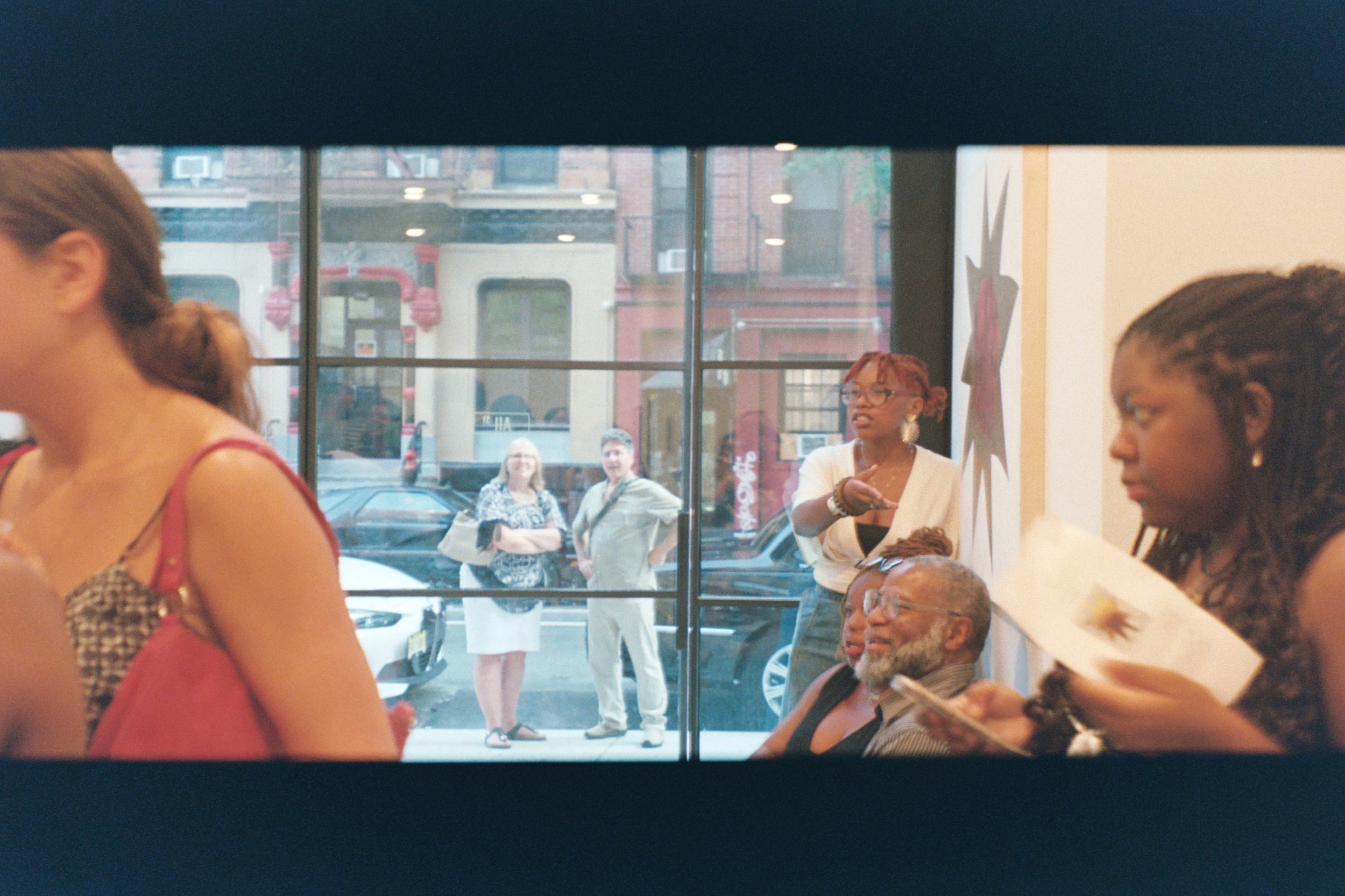On All Street Gallery’s My Need for Tender Loving Care
Rambler: On All Street Gallery’s My Need for Tender Loving Care
By Bella Lipayon
East Village and Bowery streets, once home to sweat-stained punk artists of the ‘80s, now stand relatively tame in this age; vintage pop-up shops and high-end coffee businesses occupy historic stoops, attracting one or maybe two passing spectators at a time into white air-conditioned rooms. You could miss it –the life that rang through the same walls, only existing now in stories. Those of a bookshop owner with silvering hair that was undoubtedly once another, more vibrant color. But once in a while there is evidence of movement painted in tags and murals up and down crumbling brick. And on one corner of 3rd street sits a pocket that holds the very essence of community and varied inventions I often start to believe no longer exist.
“The common thread through all of these pieces, I think, is this inescapable desire to be understood,”
in the words of Bow Young, one of two curators (along with Eden Chinn) of All Street Gallery’s group exhibition My Need for Tender Loving Care. The opening reception was held on a hot summer day in July of 2024. Inconspicuous on some afternoons, the small room spilled over with attendees, young and bubbly and chatty, even out through its glass doors. The very experience of the place seemed to speak to what the different pieces and collective were about: a kind of closeness and immediate vulnerability in their stories –a stark, welcoming, contrast to a cavernous museum. The exhibit included 12 artists and a range of mediums, each one memorable in a unique way. I had the chance to speak to a few of them who mixed among the lively viewers, about their respective pieces and processes.
The bright red that looks more like a glowing liquid than oil on canvas is easily the first thing that catches the eye in Livia Weiner’s Lonely 1. Once you are past marveling at the interplay of colors, the image of a young girl clutching a blue and green life-sized rabbit emerges amongst a scattering of objects: a trophy, a plaid blanket, an arm. The child sleeps on a wrinkled bed, brought to life by the large canvas itself, which is left unstretched at certain corners, scratched and textured with paper towels in others. Livia shares that this detail was, initially, an accident that later lent itself to the deteriorating effect she wanted to give the painting. She tells me about her process of trying to replicate the unsettling experience of a childhood memory changing with the realizations and understanding one gains with time. From the feverish color palette to the towering scale of the piece, one is almost left with no choice but to enter into this strange place where naïvety and remembrance are all rolled into one.
Bow walks me through more pieces, such as a pink textile, a tiny painted cut of wood, and, notably, a portrait of a person with wet hair, caving inwards, by Faith Mikolajczyk. The photograph, taken in 2022, was processed with Kallitype, an alternative iron-silver development method that results in a layered play of shadows and light. The figure as the subject of, Carmen Casks, “elicits a feeling of being in throws of deep irreparable distress and discomfort permeating from within outwardly to their physical existence. The body depicts the many ways in which this struggle of our nature against assigned identity exists not only in our communities but also internally.”



